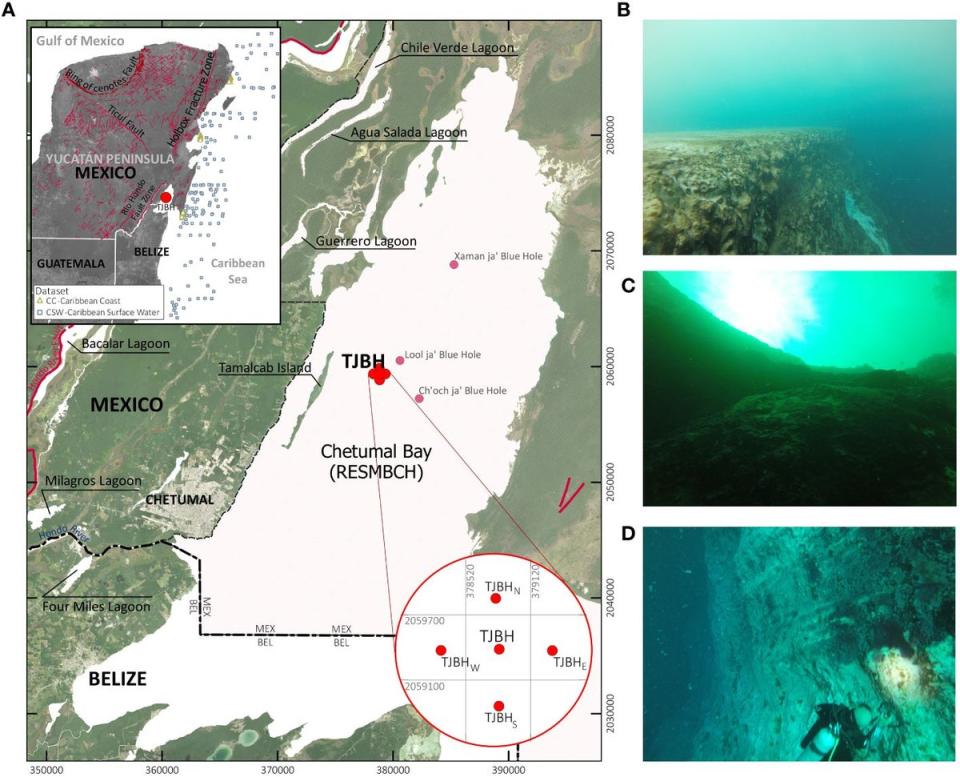Scientists unable to reach bottom of mysterious underwater sinkhole near dinosaur-killing crater off Mexico

Oceanographers have confirmed that an underwater sinkhole in Mexico’s Chetumal Bay is the world’s deepest, but what really lies at the bottom of the abyss near the dinosaur-killing Chicxulub crater remains a mystery.
The Taam Ja’ Blue Hole off the southeast coast of Mexico is at least 420m deep, beating the Dragon Hole in the South China Sea, whose bottom is about 300m below sea level.
Blue holes are caverns below the seafloor that form as water seeps through cracks, dissolving minerals on its way and leading to sinkholes.
The Taam Ja’ Blue Hole is near the Yucatan peninsula where the dinosaur-killing asteroid struck the planet 66 million years ago. It was believed to be only about 275m below sea level when it was first discovered in 2021.
A more intensive study has now found that its depth is far more.
To measure the depth of the abyss, the researchers anchored a vessel near it and dropped a line in December 2023.
They also dove in with an instrument to profile the conductivity, temperature and depth of the water and the hole.
They found that the pit was at least 420m deep but it could run deeper still. The profiler they had could only function at a depth of 500m, the researchers said.

The water in the hole was found to have layers of varying temperature and salinity.
One layer at about 400m deep had salinity and temperature values close to those of the nearby Caribbean Sea.
This indicates that there may be an underwater seabed connecting the two seas, the researchers said. “Within the depths of TJBH could lie a biodiversity to be explored and linked to physicochemical and geomorphological processes, forming a unique biotope,” they concluded.


